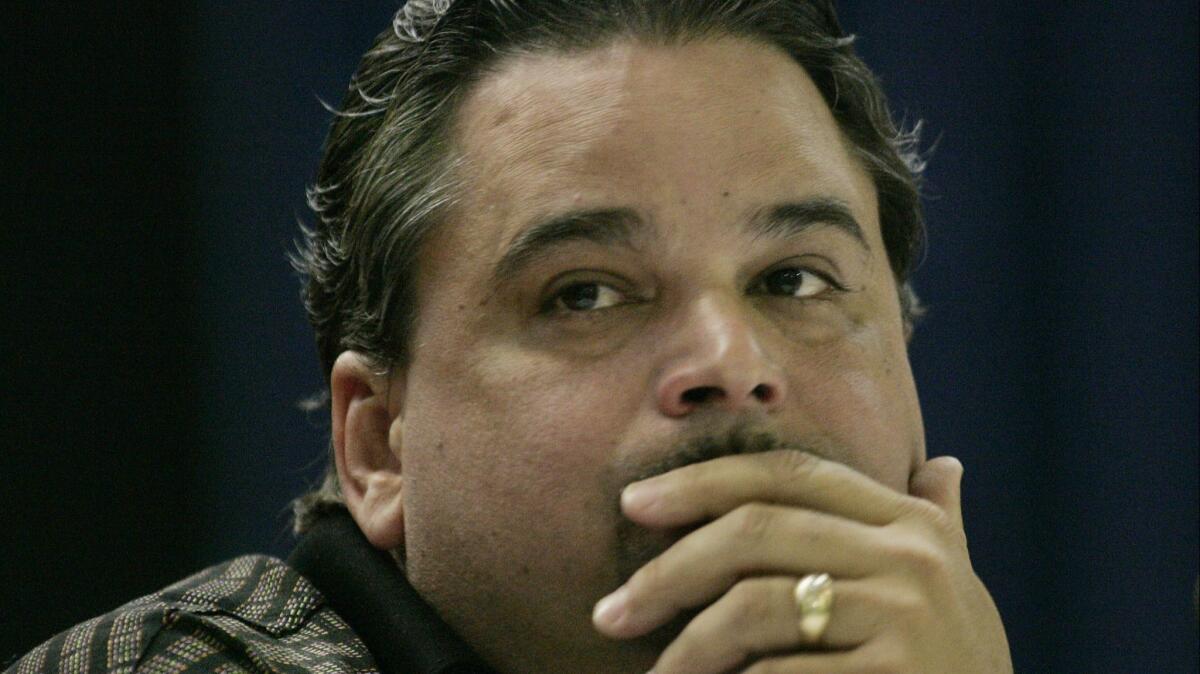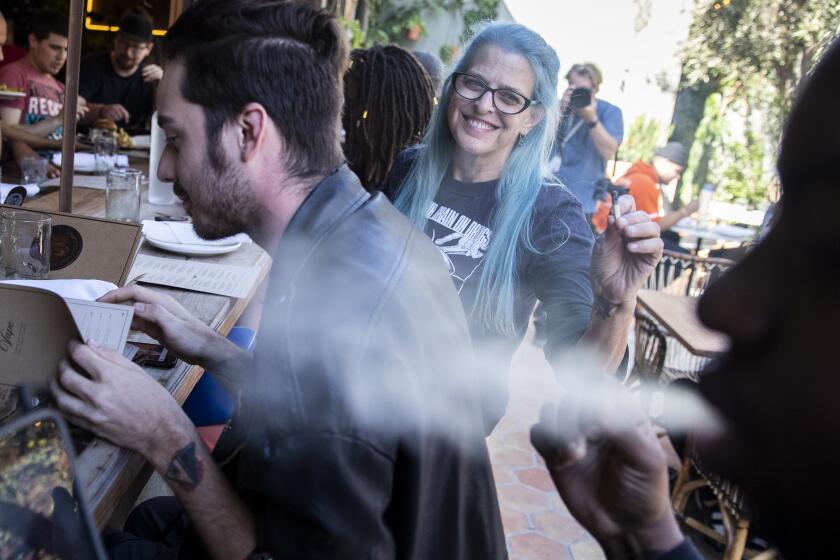On Politics: Itâs not just Trump â California voters can thank themselves for the stateâs relevancy in this Novemberâs midterm election

Reporting from Aliso Viejo â Hey, California voter, way to go! People may say youâre sun-baked, a bit too laid back and, when it comes to picking presidents, largely irrelevant.
But thanks to you, the state is sitting dead center in the November fight for control of Congress.
For the record:
5:45 a.m. Sept. 14, 2018An earlier version of this article said only a single incumbent lost reelection after the 1980 census. In fact, one incumbent lost in 1984 and three lost the general election in 1990 before new congressional lines were drawn.
Sure, President Trump deserves a lot of credit for putting a half dozen or more House seats in play, fully a quarter of the number Democrats need to seize control.
Both sides agree, for instance, the contest here in inland Orange County â where GOP Rep. Mimi Walters faces a stiff challenge from Democrat Katie Porter â wouldnât be remotely competitive if not for Trumpâs toxicity.
But even the strongest blue wave might have passed unnoticed if voters hadnât changed the way the state draws its congressional boundaries, taking the process away from politicians and giving it to an independent commission.
(A brief civics refresher: Every 10 years, following the national census, state legislators were charged with redrawing the political lines used to elect Californiaâs representatives in Washington and Sacramento as well as members of the tax-collecting Board of Equalization. The idea was to account for changes in population.)
Now think of it: If you were given the chance to ensure your job security for the next decade or so â regardless of economic ups and downs, political upheaval, corruption, scandal or other malfeasance â would you pass up the chance?
Probably not. And thatâs precisely what politicians in Washington and Sacramento did when they enjoyed the opportunity to fashion their home turf; picture foxes drafting blueprints for a custom hen house.
Not surprisingly, lawmakers did an excellent job looking out for themselves and stifling competition. So good in fact, fewer than a handful of House seats changed parties after the 1980 census.
The pattern might have repeated if a panel of retired judges hadnât stepped in and drawn new congressional boundaries after Republican Gov. Pete Wilson and Democratic legislators reached a stalemate in the early 1990s.
Then, after the 2000 census, lawmakers were back in charge and back to self-dealing business as usual. Between 2002 and 2010, only a single California House seat changed parties, notwithstanding three national wave elections.
Thatâs one seat, in 53 districts and hundreds of congressional contests.
Fed up, and urged on by do-gooder organizations like Common Cause, California voters in 2008 passed Proposition 11, taking redistricting away from lawmakers and handing responsibility for drawing legislative boundaries to an independent citizens commission.
Two years later, voters passed Proposition 20, which gave the commission power to draw the stateâs congressional lines as well.
The result has been surprising.
California, with its penchant for do-it-yourself democracy, has a history of tinkering with its election machinery, not with a lot of success.
See full coverage of the midterms in California Âť
The top-two primary â in which the two leading vote-getters advance to the general election regardless of party â grew out of another ballot measure intended to bring moderation and compromise to Sacramento by squeezing out extremists on both sides.
After just three elections, the experiment in political engineering is still in the trial stage. So far, however, researchers have found little â if any â measurable effects on moderation, and only on the Democratic side.
And then thereâs Sacramentoâs obsession with the stateâs also-ran presidential primary.
The state has fiddled with the date six times since 1992 â bouncing from June to March to February back to June â in an attempt to big-foot early voting states like Iowa and New Hampshire and give California more clout.
The effort has failed each time, and the latest move, scheduling the primary for March 2020, seems destined for similar futility.
But injecting competition into Californiaâs moribund House races has been the rare election reform that has worked just as reformers said it would.
âIâm proud of it,â said Kathay Feng, a longtime champion of more politically representative districts who was instrumental in passing the redistricting measure as head of California Common Cause.
She was especially proud, she said, of the 14 commissioners who set aside partisanship and ignored the personal interests of incumbent lawmakers in drawing new lines that stood up to repeated legal challenges.
California has even become a model for other states, said Feng, who also oversees redistricting reform efforts nationwide for Common Cause, a political watchdog group.
Voters in Colorado, Michigan, Missouri and Utah will consider ballot measures in November that would take redistricting away from self-interested lawmakers and place it in the hands of an independent commission. Earlier this year, Ohio voters passed a similar proposal.
So California voter, go ahead and give yourself a pat on the back â but leave the other hand free to cast a ballot Nov. 6. After all, competitive elections donât matter if you donât bother to participate.
@markzbarabak on Twitter
More to Read
Get the L.A. Times Politics newsletter
Deeply reported insights into legislation, politics and policy from Sacramento, Washington and beyond. In your inbox three times per week.
You may occasionally receive promotional content from the Los Angeles Times.











